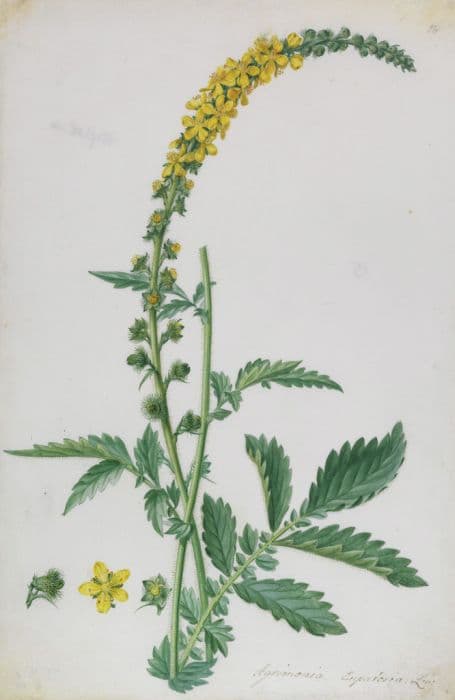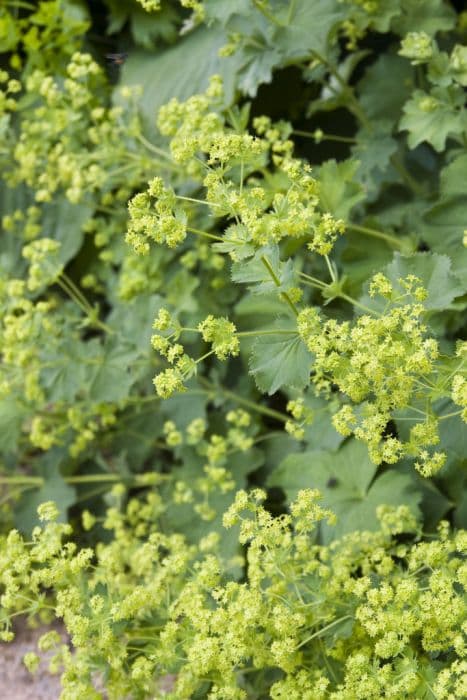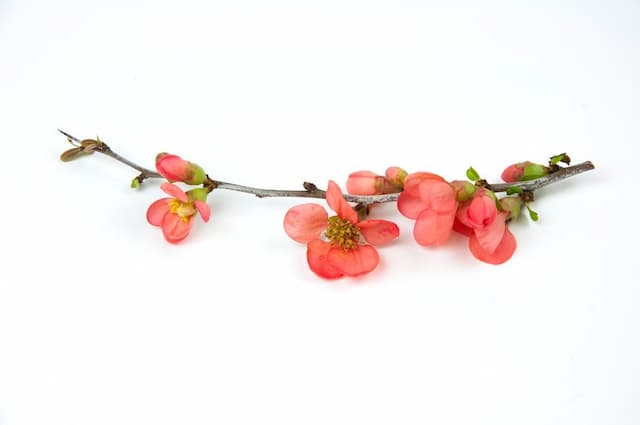Rosy Cushion Rose Rosa Rosy Cushion = 'Interall' (S/gc)
![rose [Rosy Cushion]](/_next/image?url=https%3A%2F%2Fplants-admin.emdemapps.com%2Fimages%2Fplants%2F%2Fimages%2F604b620bc62e2.png&w=3840&q=75)
ABOUT
The Rosa Rosy Cushion 'Interall' is a charming flowering shrub known for its dense, cushion-like growth habit that forms a neat, mounded shape. It boasts small, lush green leaves that create a vibrant backdrop for the profusion of flowers it produces. The blooms are the star of this plant, presenting a delightful rosy pink hue that captures the essence of a classic rose garden. Each flower is semi-double, featuring a delicate layering of petals surrounding a visible center where yellow stamens are tucked. These flowers are not only attractive to the eye but also to pollinators such as bees and butterflies, which are often seen flitting from bloom to bloom. As the seasons change, the flowers may fade, giving way to small, ornamental fruit that adds a further dimension to the plant's appeal. Overall, the Rosa Rosy Cushion is a picture of grace and beauty, offering a continuous display of colorful blossoms that can brighten any garden space.
About this plant
 Names
NamesFamily
Rosaceae
Synonyms
Rosy Cushion Rose
Common names
Rosa 'Interall', Rosa Rosy Cushion
 Toxicity
ToxicityTo humans
Roses, such as the Rosa Rosy Cushion, are generally considered non-toxic to humans. However, it is worth noting that the thorns on roses can cause physical injuries if handled improperly. Ingesting significant amounts of rose petals or leaves might lead to gastrointestinal upset, but the plant is not known for being poisonous or causing severe poisoning in humans.
To pets
Roses are also generally considered non-toxic to pets, including cats and dogs. Similar to humans, the main risk to pets comes from the thorns, which can cause injury or discomfort if chewed on or swallowed. If a pet ingests a large amount of roses, it may experience mild stomach upset. There are no severe toxic effects expected from ingestion of roses by pets.
 Characteristics
CharacteristicsLife cycle
Perennials
Foliage type
Deciduous
Color of leaves
Green
Flower color
Pink
Height
2 feet (60 cm)
Spread
2 feet (60 cm)
Plant type
Shrub
Hardiness zones
5
Native area
Cultivar
Benefits
 General Benefits
General Benefits- Easy to Grow - Rosa 'Rosy Cushion' is known for its adaptability and ease of growth, making it suitable for a variety of garden conditions.
- Low Maintenance - This rose variety requires minimal care once established, making it ideal for busy gardeners.
- Disease Resistance - 'Rosy Cushion' has good resistance to common rose diseases, reducing the need for chemical treatments.
- Long Blooming - It offers a long flowering season, typically from late spring to fall, providing extended visual interest.
- Attracts Pollinators - The flowers attract bees and butterflies, which are beneficial for pollination in the garden.
- Landscape Versatility - This plant works well in mixed borders, as ground cover, or in containers due to its compact habit.
- Vibrant Color - With its deep pink flowers, it adds a burst of color to any garden setting.
- Petite Size - The 'Rosy Cushion' rose's small size makes it suitable for smaller gardens or spaces where larger rose bushes would be impractical.
- Hardiness - It is hardy in a range of climates, making it accessible to a wide array of gardeners.
- Cut Flowers - The roses can be cut and used in bouquets or indoor arrangements, providing beauty both outdoors and inside the home.
 Medical Properties
Medical PropertiesThis plant is not used for medical purposes.
 Air-purifying Qualities
Air-purifying QualitiesThis plant is not specifically known for air purifying qualities.
 Other Uses
Other Uses- Culinary Garnishes: The petals of the rose can be used as an edible decoration on cakes and desserts, adding a touch of elegance and a subtle floral flavor.
- Natural Fabric Dye: The deep pigments of the rose can be used to dye fabrics organically, providing a range of colors from pink to orange depending on the mordant used.
- Bath Additive: Petals can be added to bathwater for a luxurious, fragrant bathing experience, offering a spa-like atmosphere at home.
- Floral Crafts: Dried roses become components for potpourri mixes, pressed flower art, and natural confetti for celebrations.
- Bookmarks: Pressed rose petals can be laminated and used as unique, floral-themed bookmarks as a sentimental or decorative item.
- Plant Dye for Art: The petals can be used to produce natural plant dyes for painting or staining paper in art projects.
- Rose Water: Petals can be distilled to create rose water, which is used for culinary purposes in recipes like baklava or rice pudding.
- Eco-Friendly Insect Repellent: Some rose varieties can be used to deter certain insects naturally when planted in strategic locations.
- Scent Sachets: Dried rose petals and buds can be placed in small pouches to create drawers or closet sachets that provide a fresh scent.
- Greeting Cards: Using crushed rose petals, one can create natural inks or embellishments for homemade greeting cards.
Interesting Facts
 Feng Shui
Feng ShuiThe rose is not specifically used in Feng Shui practice.
 Zodiac Sign Compitability
Zodiac Sign CompitabilityThe rose is not used in astrology practice.
 Plant Symbolism
Plant Symbolism- Love: As with many roses, the Rosa Rosy Cushion is commonly associated with love and affection, symbolizing deep emotion and heart-felt sentiments.
- Beauty: The aesthetic appeal of its blossoms represents beauty and grace in various cultures, emphasizing the admiration for natural elegance.
- Joy: Its lush, cushion-like growth with bright, cheerful flowers can symbolize joy and happiness in one's life.
- Appreciation: Gifting this rose can be an expression of gratitude and thankfulness to another individual.
 Water
WaterShrub roses like the Rosa 'Rosy Cushion' should be watered deeply but infrequently to encourage deep root growth. Aim for about 1 inch of water per week, either from rainfall or manual watering. During the hot summer months or in particularly dry climates, water twice a week, applying about 2 gallons per plant each time. It's best to water in the morning to allow the foliage to dry before evening, reducing the risk of disease. Always water at the base of the plant to avoid wetting the foliage, which can lead to fungal diseases.
 Light
LightShrub roses like the Rosa 'Rosy Cushion' prefer full sun conditions, which means they need at least six hours of direct sunlight daily. The ideal spot is one where morning light hits the plant to dry dew quickly from the leaves. They can tolerate some light shade, particularly in hotter climates, but too much shade can lead to poor blooms and an increased risk of disease.
 Temperature
TemperatureRosa 'Rosy Cushion' thrives in a range of temperatures but prefers a moderate climate. It can generally tolerate temperatures as low as 20 degrees Fahrenheit and as high as 90 degrees Fahrenheit, although it performs best when temperatures are between 65 and 75 degrees Fahrenheit. Ensure good air circulation to help regulate temperature and prevent disease.
 Pruning
PruningPrune Rosa 'Rosy Cushion' in late winter or early spring before new growth begins, typically around late February to April. Remove dead or damaged wood, thin out crowded areas to improve air circulation, and shape the plant as desired. Pruning stimulates new growth, leads to better air flow, and can reduce disease. Annual pruning is essential to maintain the plant’s health and vigor.
 Cleaning
CleaningAs needed
 Soil
SoilThe best soil mix for the Rose 'Rosy Cushion' should be well-draining with a mix of loam, compost, and coarse sand or perlite. The pH should ideally fall between 6.0 and 7.0.
 Repotting
RepottingRoses like 'Rosy Cushion' typically do not need frequent repotting and are often planted directly in the garden. If grown in containers, repotting every 2-3 years may be necessary.
 Humidity & Misting
Humidity & MistingRose 'Rosy Cushion' is tolerant of a wide range of humidity levels but prefers average garden conditions; it does not require high humidity.
 Suitable locations
Suitable locationsIndoor
Provide bright light, good air circulation.
Outdoor
Plant in full sun, enriched soil, water regularly.
Hardiness zone
5-9 USDA
 Life cycle
Life cycleThe Rosa Rosy Cushion, commonly known as the Shrub Rose, begins its life as a dormant bare-root plant or as a potted specimen. Upon planting in well-drained soil with ample sunlight, it enters a vegetative stage, producing compound leaves and elongating stems. As the weather warms in spring, the plant starts its reproductive stage, developing tight flower buds which bloom into clusters of pink, cushion-like flowers through summer into fall. After pollination, which may involve insects like bees, the flowers form rose hips (fruit) which contain seeds, potentially leading to new plants if conditions allow for germination. In autumn, the plant prepares for dormancy by slowing its growth and shedding leaves in response to shorter days and cooler temperatures. Finally, the rose endures winter dormancy, conserving energy until the following spring, when the cycle begins anew with fresh growth.
 Propogation
PropogationPropogation time
Spring-Early Summer
The Rosa Rosy Cushion, commonly known as 'Interall', is a variety that is typically propagated through the method of softwood cuttings. This is usually done in late spring to early summer, when the new growth is still flexible but has started to harden slightly. Cuttings should be about 4 to 6 inches long (10 to 15 cm) and include several sets of leaves. The lower leaves are removed and the base of the cutting is dipped in rooting hormone before being inserted into a well-draining soil mixture. Maintaining high humidity and consistent moisture around the cuttings is crucial for successful root development. Once roots have established, the young plants can be gradually acclimated to outside conditions before being transplanted to their permanent location.









